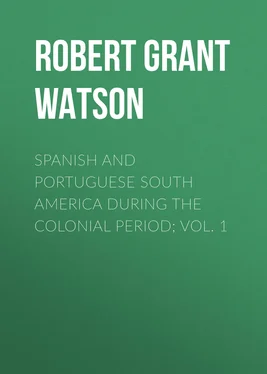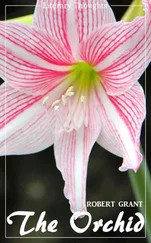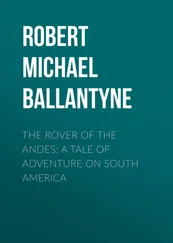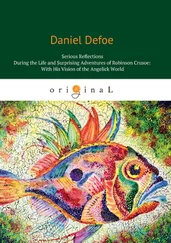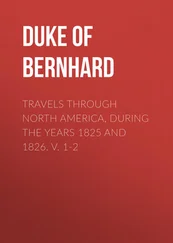Robert Grant Watson - Spanish and Portuguese South America during the Colonial Period; Vol. 1
Здесь есть возможность читать онлайн «Robert Grant Watson - Spanish and Portuguese South America during the Colonial Period; Vol. 1» — ознакомительный отрывок электронной книги совершенно бесплатно, а после прочтения отрывка купить полную версию. В некоторых случаях можно слушать аудио, скачать через торрент в формате fb2 и присутствует краткое содержание. Жанр: foreign_prose, История, foreign_edu, foreign_antique, на английском языке. Описание произведения, (предисловие) а так же отзывы посетителей доступны на портале библиотеки ЛибКат.
- Название:Spanish and Portuguese South America during the Colonial Period; Vol. 1
- Автор:
- Жанр:
- Год:неизвестен
- ISBN:нет данных
- Рейтинг книги:5 / 5. Голосов: 1
-
Избранное:Добавить в избранное
- Отзывы:
-
Ваша оценка:
- 100
- 1
- 2
- 3
- 4
- 5
Spanish and Portuguese South America during the Colonial Period; Vol. 1: краткое содержание, описание и аннотация
Предлагаем к чтению аннотацию, описание, краткое содержание или предисловие (зависит от того, что написал сам автор книги «Spanish and Portuguese South America during the Colonial Period; Vol. 1»). Если вы не нашли необходимую информацию о книге — напишите в комментариях, мы постараемся отыскать её.
Spanish and Portuguese South America during the Colonial Period; Vol. 1 — читать онлайн ознакомительный отрывок
Ниже представлен текст книги, разбитый по страницам. Система сохранения места последней прочитанной страницы, позволяет с удобством читать онлайн бесплатно книгу «Spanish and Portuguese South America during the Colonial Period; Vol. 1», без необходимости каждый раз заново искать на чём Вы остановились. Поставьте закладку, и сможете в любой момент перейти на страницу, на которой закончили чтение.
Интервал:
Закладка:
Leaving this inhospitable spot, Ojeda proceeded to explore the gulf and reached the port of Maracaibo , where, in compliance with the entreaties of the natives, he sent a party on shore to explore the country. The Spaniards on this occasion were treated with the utmost hospitality. Indeed the whole country poured forth its population to do them homage, looking upon them and treating them as beings of a superior race or world. The Spaniards were permitted to take away with them several of the beautiful females of the country, one of whom accompanied Ojeda in a subsequent voyage.
Ojeda, in his report of this voyage, stated that he met with English voyagers near Venezuela , or Coquibacoa . Of the expedition here alluded to, no other record has yet been brought to light. The North-American continent had ere this time been visited in 1497, by John Cabot, a Venetian, in the service of Henry VII., together with his son, the celebrated Sebastian Cabot, of whom more will be said hereafter. These navigators discovered the coast of Newfoundland on the 24th of June of the above-mentioned year, and coasted southwards as far as to Florida . The Cabots were thus the first discoverers of the mainland of America, having preceded Columbus by one year.
Ojeda continued his route along the western shores of the Gulf of Venezuela , doubling Cape Maracaibo and following the coast until he reached the headland of Cape de la Vela , whence he stood across the Caribbean Sea for Hispaniola . He reached Cadiz on his return in June 1500.
1499.
Contemporary with this voyage of Ojeda was a similar one by Pedro Alonzo Niño, undertaken, not with the object of discovery, but for gain. This mariner sailed from Palos, and, following the chart of Columbus, reached the coast of Paria , where he landed to cut dye-wood, and where he established friendly relations with the natives. He, too, passed through the Boca del Drago , and encountered the Carib pirates, by whom he was boldly assailed, but who fled at the discharge of his artillery. Niño and his companions then steered for the island of Margarita , where they obtained a large quantity of pearls. They afterwards skirted the coast of Cumana , and were invariably well treated by the natives; and they inferred that this was a part of the mainland from the fact of their meeting with deer and rabbits, these animals not having been seen by them on any of the islands. Niño next proceeded to a country called Cauchieto , where, however, the inhabitants, who had been visited by Ojeda, prepared to resist his landing. Not wishing to provoke hostilities, Niño returned to Cumana ; whence, when he had amassed a sufficient number of pearls, he set sail for Spain, where he arrived in April
1500.
The next Spanish navigator who furthered geographical discovery in this quarter of South America was Rodrigo de Bastides of Seville, who set out with two caravels in October 1500, having with him the veteran pilot Juan de la Cosa, who had sailed with Columbus. Bastides had likewise on board Vasco Nuñez de Balboa, afterwards the celebrated discoverer of the Southern Sea. 4 4 “Voyages of the Companions of Columbus;” by Washington Irving.
This expedition extended the acquaintance with the coast of Terra Firma from Cape de la Vela to the spot afterwards named Nombre de Dios . Bastides has left a name for himself, as distinguished from the great mass of his countrymen who appeared in that part of the world, for his kind treatment of the natives. His vessels became, unfortunately, pierced by the worm which abounds in those waters, and it was with great difficulty that he contrived to reach Hispaniola .
Alonzo de Ojeda, in consideration of his past services, received a grant of land in Hispaniola , and likewise the government of Coquibacoa , which place he had discovered. He was authorized to fit out a number of ships at his own expense and to prosecute discoveries on the coast of Terra Firma . It is said that one of the chief reasons for granting this government, and the privileges which accompanied it, to Ojeda, was the fact of his having met with an English expedition near Coquibacoa . The Spanish sovereigns were alarmed at the idea of foreign intrusion, and they wished to confide the most advanced post in their dominions to a governor of the resolute valour of which Ojeda had given such abundant proof. He was instructed to set up the arms of Castile and Leon in every place he should visit, as a hint to the intrusive English that these places had already been taken possession of.
1502.
With four vessels, Ojeda set sail for the Canaries , in 1502, and thence proceeded to the Gulf of Paria , from which locality he found his way to Coquibacoa . Not liking this poor country, he sailed on to the Bay of Honda , where he determined to found his settlement, which was, however, destined to be of short duration. Provisions very soon became scarce; and one of his partners, who had been sent to procure supplies from Jamaica , failed to return until Ojeda’s followers were almost in a state of mutiny. The result was that the whole colony set sail for Hispaniola , taking the governor with them in chains. All that Ojeda gained by his expedition was that he at length came off the winner in a lawsuit, the costs of which, however, left him a ruined man.
We have now once more, in following according to time the progress of discovery towards the Isthmus, to return to the voyages of Columbus. He was already sixty-six years of age when he embarked on his fourth and last voyage. His squadron, consisting of four small caravels , set out from Cadiz on the 9th of May 1502, and, after some delay on the coast of Morocco, reached the Caribbee Islands on the 15th of June. Having been refused admission to enter the port of San Domingo , Columbus, after riding out a fearful storm, sailed for some time along the coast of Honduras , with the object, which was ever before him in this expedition, of finding a supposed strait opening out into the Indian Ocean. On the 17th of October he arrived off the coast of Veragua , where he found the natives possessed of many ornaments of gold. The Spaniards likewise found in this quarter the first signs of solid architecture which they had discovered in the New World.
The great discoverer is honourably distinguished from others in that the advancement of science, rather than the acquisition of the precious metals, was the object of his quest. Although told by his interpreters, when sailing along the coast of Veragua , that in five towns which he passed he might obtain great quantities of gold, and although the natives placed so little value on objects of this mineral that they were always ready to exchange them for Spanish trifles, Columbus preferred to continue his course in order the sooner to arrive at the supposed strait. “I would not rob nor outrage the country,” says the admiral in one of his letters, “since reason requires that it should be settled, and then the gold may be procured without violence.” Columbus was an Italian; but it is safe to affirm that the sentiment expressed in the above sentence would not have been uttered by any one amongst the Spanish adventurers of the period.
On the 2nd of November Columbus reached the spacious harbour of Porto Bello , so named by its illustrious discoverer, and which was destined afterwards to hold so important a position as being the spot where the yearly fleet of galleons discharged its cargoes of European commodities for the supply of Spanish South America. The admiral found the neighbouring country open and cultivated, the houses surrounded by fruit-trees and groves of palms, and the fields producing maize, vegetables, and pine-apples. After a week’s delay, Columbus proceeded eastward to the point afterwards known as Nombre de Dios . His vessels, however, now began to be pierced by the tropical worm. Landing, therefore, in a small harbour, to which he gave the name of El Retrete , he found himself in such inconveniently close vicinity to the shore, that troubles soon arose between the natives and his unruly seamen; and these were not quelled without some display of force. It was at this point that the great navigator at length consented to relinquish his long and painful search after the supposed strait. Indeed, though he knew it not, the whole coast along the Isthmus had now been navigated by expeditions starting from opposite directions. In compliance with the wishes of his companions, the admiral now agreed to return to the coast of Veragua .
Читать дальшеИнтервал:
Закладка:
Похожие книги на «Spanish and Portuguese South America during the Colonial Period; Vol. 1»
Представляем Вашему вниманию похожие книги на «Spanish and Portuguese South America during the Colonial Period; Vol. 1» списком для выбора. Мы отобрали схожую по названию и смыслу литературу в надежде предоставить читателям больше вариантов отыскать новые, интересные, ещё непрочитанные произведения.
Обсуждение, отзывы о книге «Spanish and Portuguese South America during the Colonial Period; Vol. 1» и просто собственные мнения читателей. Оставьте ваши комментарии, напишите, что Вы думаете о произведении, его смысле или главных героях. Укажите что конкретно понравилось, а что нет, и почему Вы так считаете.
